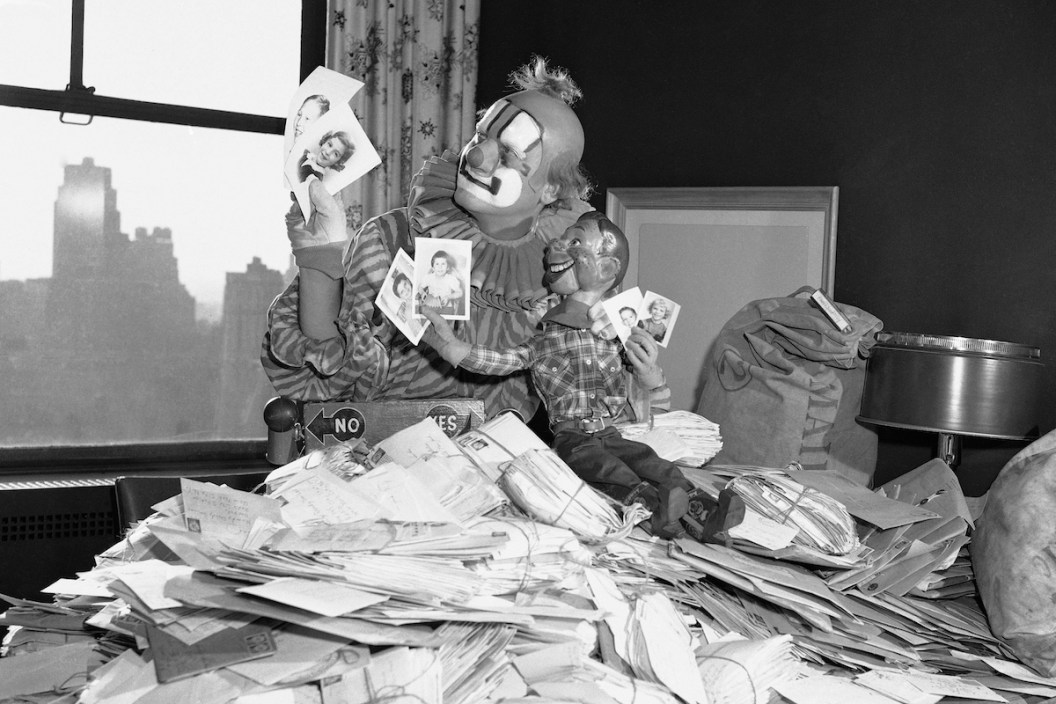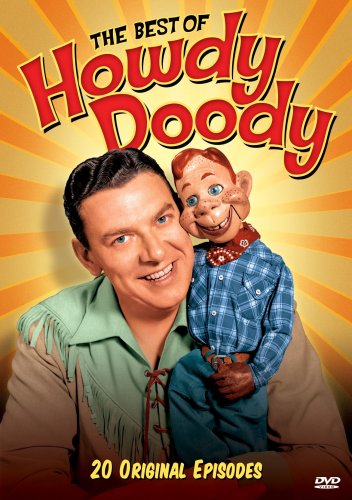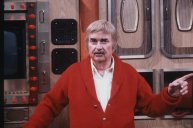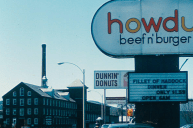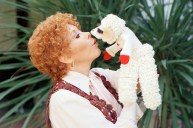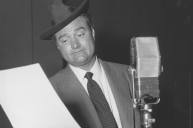The Howdy Doody show could very well be one of the most celebrated children's television programs of all time. Children loved tuning in to watch the freckle-faced marionette character and sing along with his classic theme song. The show's popularity allowed it to run for 13 years and impacted the future of children's television in the process.
Videos by Wide Open Country
Bob Smith first created the character of Howdy Doody during his days on radio shows. After making an appearance on NBC's Puppet Playhouse, Howdy Doody's voice was so popular the studio decided to give him his own show so people could see him. A puppeteer from Puppet Playhouse, Frank Paris, was hired to make a puppet of Smith's character, while E. Roger Muir shares credit as the show's creator and producer.
Smith was the host of the show, known as "Buffalo Bob Smith." Buffalo Bob and Howdy Doody starred alongside Bob Keeshan, Lew Anderson, and Bobby Nicholson, and would be joined each episode by many of their friends; puppets as well as human characters -- Heidi Doody, Phineas T. Bluster, Princess SummerFallWinterSpring (first a puppet performed by Rhoda Mann and later a live-action character portrayed by Judy Tyler), Dilly Dally, Flub-a-Dub, Chief Thunderthud, seltzer-squirting Clarabell the Clown and even Gumby.
Here are 11 things you might not have known about the classic show.
1. It was the first nationally televised children's show
The show was one of the first shows produced at NBC in Rockefeller Center in New York, but really paved the way for future children's shows.
2. It was the first NBC show to run nearly every day of the week
When the show first aired, it would run on Tuesdays, Thursdays and Fridays for one hour. But due to its popularity, the studio shortened the time frame to 30-minute episodes and ran the show Monday through Friday. It even began airing on Saturday mornings in 1956.
That adds up to a ton of episodes: 2,543, to be exact. The Howdy Doody Show became the first TV show in history to run 1,000 continuous episodes.
3. It helped pioneer early color television production
At the time, RCA owned NBC. Halfway through its run, The Howdy Doody Show switched to color and helped RCA sell its new color television sets.
4. It was one of the first shows with audience participation
At the beginning of every episode, Buffalo Bob would ask the children in the live audience (known as the Peanut Gallery) what time it was. They would all yell in unison, "It's Howdy Doody Time!" This was one of the first times a television audience actually participated in the show itself, which, as we know, has now become a part of mainstream television.
5. There was drama on the set
Howdy Doody was so popular that department stores became interested in selling his merchandise. Macy's reached out to Frank Paris regarding the rights to the character. Unfortunately for Paris, it was Bob Smith who owned the rights to his character, and a feud began between the two men.
Sometimes it would get so bad that Paris would just take the puppet from set hours before the show was supposed to go live.
Read More: 'Captain Kangaroo' was TV's Long Running Grandfather Figure
6. Howdy Doody got plastic surgery
Well, kind of. The studio got really sick of Paris disappearing with the puppet. It happened so often they had stories ready for when their star wasn't able to be there. They got so sick of this, they worked with a Disney animator to create an upgraded Howdy Doody. Bob Smith was pretty pleased because he thought the original marionette was really unattractive.
7. You can visit the original puppet
The original Howdy Doody puppet is on display in Michigan at the Detroit Institute of Arts. The original on display though is actually the updated version that replaced Paris's original.
The puppet's stand-in, "Double Doody," is at the Division of Culture and the Arts at the Smithsonian National Museum of American History.
8. Smith continued to make appearances on the show while recovering from a heart attack
The television show tried to make excuses for Smith's absence in 1954 while he was trying to recuperate at home by telling viewers that he was spending time in "Pioneer Village." Despite having guest stars take his place, sponsors really wanted to have Smith himself endorse products and show his face. The studio ended up having to build a "Pioneer Village" set in Smith's home so that he could make commercial appearances.
Allen Swift stepped in to voice Howdy Doody during this time and ended up continuing to be the voice even after Smith returned to the show.
9. The show ended with a big surprise
The final episode, "Clarabell's Big Surprise," teases that there will be a big reveal at some point during the hour-long special. At the very end, Clarabell the Clown, played by Lew Anderson, reveals the surprise. The character had been mute the entire run of the show, but in the final moments of the TV show, it is revealed that he can talk. The last visual before the screen fades to black is Clarabell saying, "Goodbye, kids."
10. There was a brief reboot, but it was nothing like the original
The New Howdy Doody Show tried to make a comeback in the mid-70s since it had been such a hit 20 years prior. It even gave Howdy Doody a '70s hairstyle. The reboot brought back some of the other original characters, including Corny Cobb and Clarabell. But viewers in the '70s just weren't as attached to Doodyville, so the show was canceled after only one year.
11. Chief Thunderthud's greeting became surfer slang
Hailing from the fictional Ooragnak tribe (kangaroo spelled backward) Chief Thunderthud, played by Bill Le Cornec, had a unique greeting when he made appearances on the show. "Cowabunga!" would go on to become a popular surfer slang term...go figure.
This story originally ran on Sept. 12, 2020.
Now Watch: Stroll Through the Real Mayberry from 'The Andy Griffith Show'
https://rumble.com/embed/u7gve.v6euj7/
